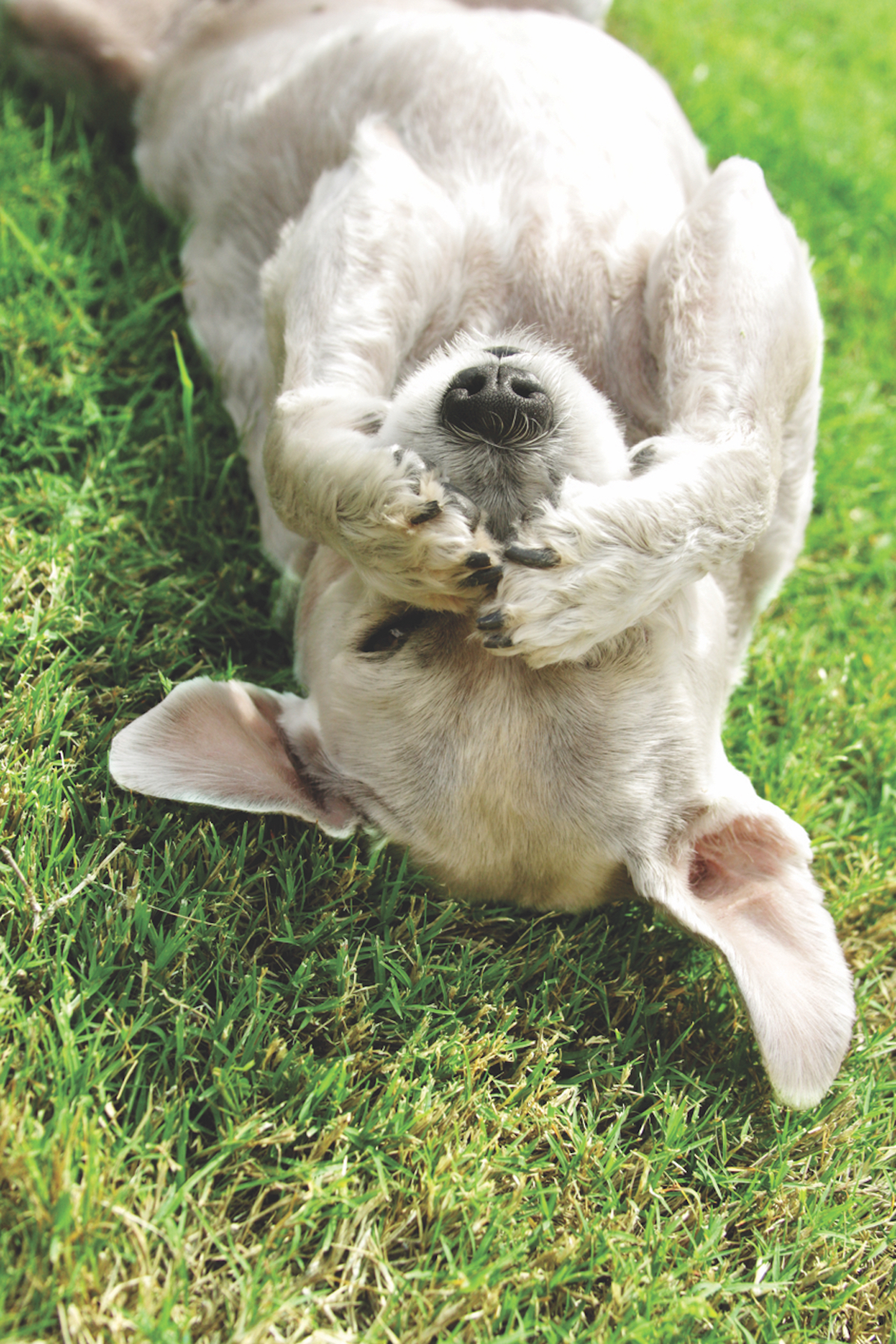By Tracie Korol
I have never been one to purchase packaged treats for my dogs. As long as my crew was thrilled when I chucked pieces of apple, green beans or hunks of whatever I happened to be eating at them it seemed silly to spend $5 for 12 pieces of petrified bacon-flavored god knows what. However, when Greenies hit the market in the late ‘90’s, I succumbed to the hype and bought a few. Perhaps they really were a miracle dental product and boy, did my guys love them.
Then came the morning when I discovered a rubbery green gob plus attendant pistachio-hued foam glued to the rug in the living room. Removal required tools and chemicals and yet, the faint green stain remains to this day. Shortly thereafter I ran an experiment with the last of the Greenies. I filled a jar with warm water, added a little vinegar and hunk of Greenie. The experiment sat on the counter for the better part of a month; I’d shake the jar every couple of days but the Greenie never dissolved. Sure, it got oogy and the water turned green and cloudy, but it never really changed shape.
Greenies were developed in the late 1990s, quickly overtaking the Milk-Bone market to become the most popular dog treat by 2003, with about $315 million in annual sales and a total of nearly 600 million sold. Greenies, shaped like a toothbrush on one end and a bone on the other, are marketed as a way to clean a dog’s teeth and freshen a dog’s mouth. The idea for Greenies was formulated as a way to mitigate Ivan the Samoyed’s strikingly stinky breath. Ivan belonged to Joe and Judy Roetheli. Joe Roetheli worked for the U.S. Department of Agriculture and holds a doctorate in agricultural economics from the University of Missouri; Judy was a teacher. Joe and Judy collaborated with Dr. Lon D. Lewis, who authored “Care and Feeding of the Horse,” and as a team they developed what they called “the original green smart treat.”
The number one ingredient in Greenies is Gelatin, followed by Wheat Protein Isolate, Glycerin, Soy Protein Isolate, Sodium Caseinate, Natural Poultry Flavor, Hydrogenated Starch Hydrolysate and 27 other chemical additives. In dead last position is chlorophyll. To elaborate, the number two ingredient is a dietary component that is used in popular sports nutrition supplements for bodybuilders and strength-training athletes. Number seven is a sugar alcohol used to add bulk, body, texture, and viscosity to products and can protect against damage from freezing and drying. Save for the chlorophyll, which might actually dent bad breath, these treats appear to be sweet, faintly chicken flavored, rock-hard bricks of compressed wheat starch and milk/soy derivative. Do they clean teeth like the ads say? I doubt it. Do dogs love them? Absolutely.
The only benefit of gnawing a Greenie might be scraping off a bit of tartar when working a chew. However, between the Greenie’s inception and 2006, there was a staggering 460% increase in the number of physical hazard calls to vets (choking hazard or risk of intestinal obstruction) according to the ASPCA. To offset the growing number of reports of intestinal surgery post-Greenie, in 2006, NUTRO, Greenies’ mother company, claims to have reformulated the recipe toward 85% digestibility. The company says the number of complaints it has received is very low in relation to the vast numbers of treats sold.
The way I look at it, if my Best Friend is the one of the 15% suffering the consequences of an undigested Greenie, the number of complaints the Greenies company receives is irrelevant. But that’s just me.
Dental health, while not complicated, is a bit more involved than handing your pet a commercially produced, molded object that has a great advertising agency behind it. First, you need to be looking at your dog’s teeth and gums on a regular basis — weekly, regular, not yearly, regular. You should be seeing shiny white teeth, lightly pink gums and scent a pleasant doggy breath. If you’re seeing a tartar build-up and inflamed gum tissue, and the smell just about knocks you over, then you need to think seriously about ramping up to a regular oral hygiene program.
Next time: Options for dental care.






